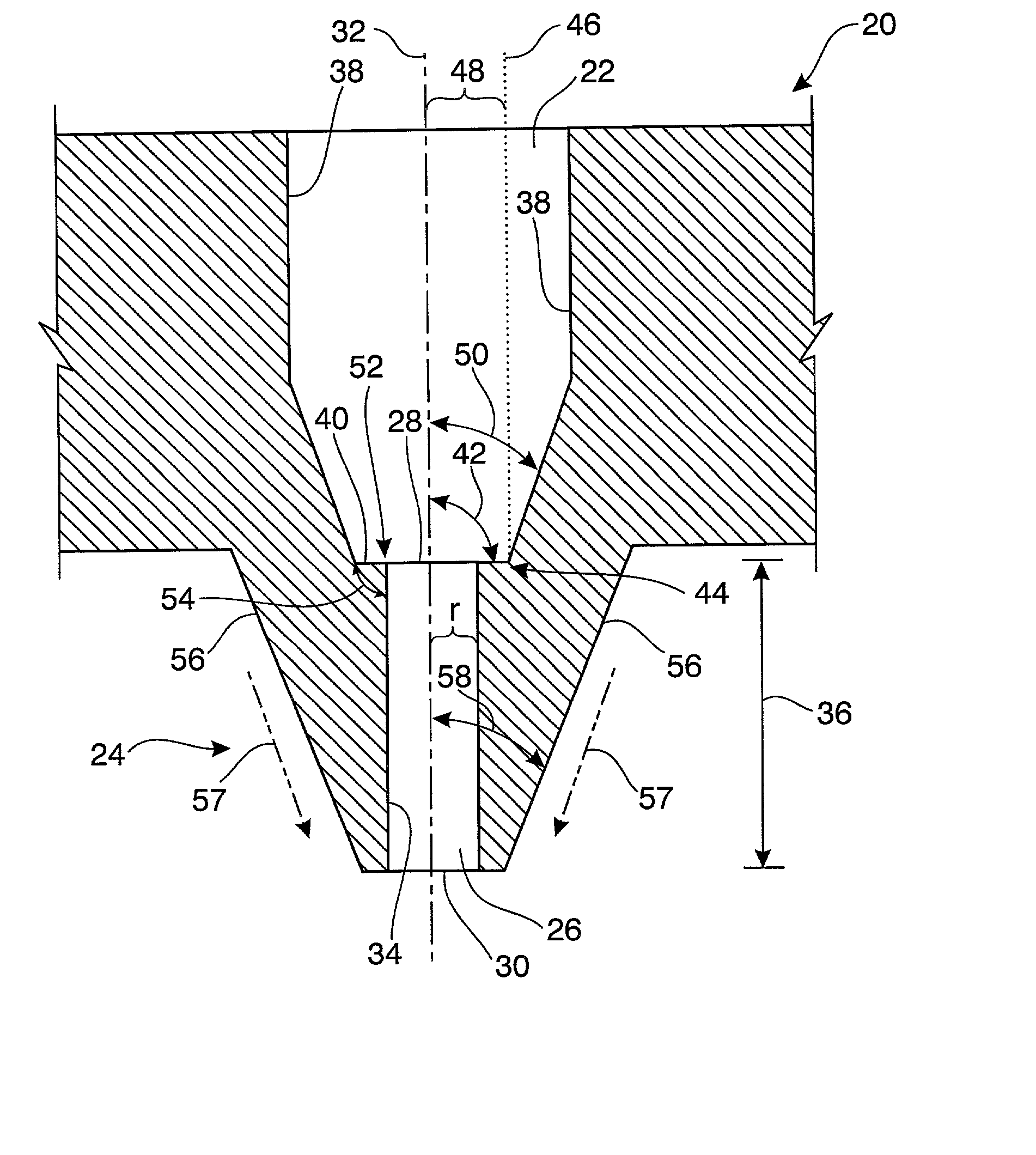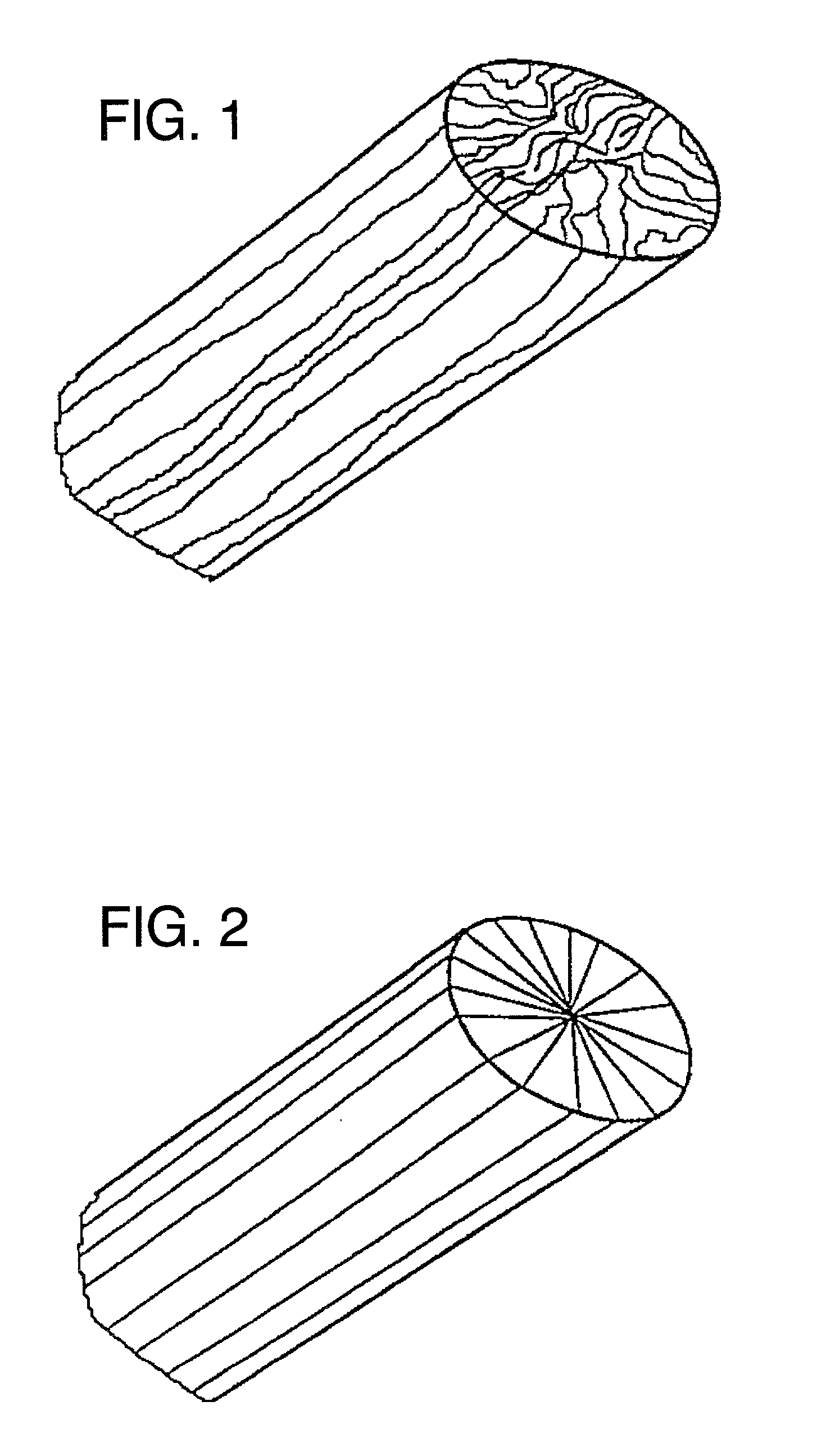Using counter-bore and capillary geometry to control mesophase pitch-based carbon fiber filament micro and macro structure
a carbon fiber filament and micro-macro technology, applied in the field of counterbore and capillary geometry, can solve the problems of increasing thermal and electrical conductivity, reducing tensile strength, and unsatisfactory for many applications
- Summary
- Abstract
- Description
- Claims
- Application Information
AI Technical Summary
Problems solved by technology
Method used
Image
Examples
Embodiment Construction
[0063] The embodiments discussed herein are merely illustrative of specific manners in which to make and use the invention and are not to be interpreted as limiting the scope of the instant invention.
[0064] While the invention has been described with a certain degree of particularity, it is to be noted that many modifications may be made in the details of the invention's construction and the arrangement of its components without departing from the spirit and scope of this disclosure. It is understood that the invention is not limited to the embodiments set forth herein for purposes of exemplification. Like numbers in the drawings indicate like parts in various embodiments of the invention.
[0065] FIG. 1 illustrates a fiber produced according to the present invention having a non-radial cross-section while FIGS. 2 and 3 illustrate fibers of the prior art.
[0066] Referring to FIG. 4, the preferred embodiment of the present invention is a blow spinning die 20 which has a central cavity 2...
PUM
| Property | Measurement | Unit |
|---|---|---|
| angle | aaaaa | aaaaa |
| angle | aaaaa | aaaaa |
| angle | aaaaa | aaaaa |
Abstract
Description
Claims
Application Information
 Login to View More
Login to View More - R&D
- Intellectual Property
- Life Sciences
- Materials
- Tech Scout
- Unparalleled Data Quality
- Higher Quality Content
- 60% Fewer Hallucinations
Browse by: Latest US Patents, China's latest patents, Technical Efficacy Thesaurus, Application Domain, Technology Topic, Popular Technical Reports.
© 2025 PatSnap. All rights reserved.Legal|Privacy policy|Modern Slavery Act Transparency Statement|Sitemap|About US| Contact US: help@patsnap.com



